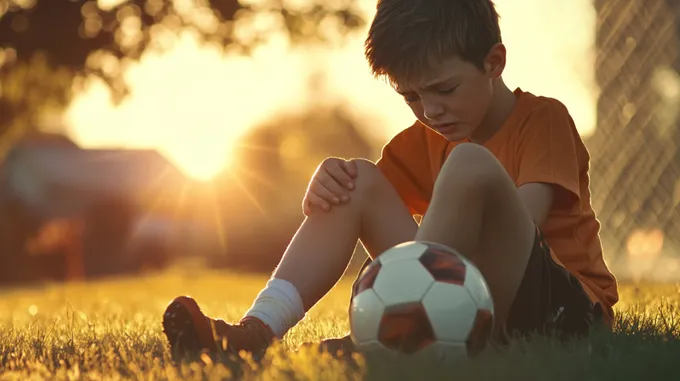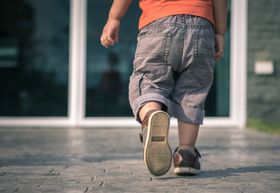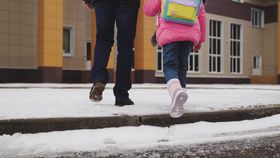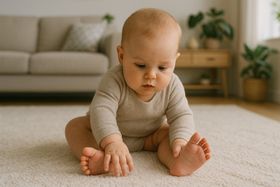Effects of Improperly Sized Shoes on Children and Toddlers
Improperly sized shoes pose a significant risk of injuries to children and toddlers in the short term, and stunted foot growth in the long term.
Updated December 6, 2024

As every parent knows, toddlers grow astonishingly fast, and their feet are no exception. Not keeping up with their rapidly changing shoe size can have serious consequences, both in the short and long term. It's crucial to ensure that your child wears properly fitted shoes for their overall health and development.
The Risks of Improper Shoe Sizing
Short-Term Effects
Wearing shoes that are too large can elevate the risk of accidents and injuries. The consequences include:
- Increased risk of tripping and falling
- Higher likelihood of sprains and strains
- Potential for fractures
- Difficulty in maintaining proper balance
- Enhanced chance of developing blisters or callouses due to abnormal foot movement inside the shoe
» Make sure you know how to prevent kids' foot injuries
On the other hand, shoes that are too tight not only cause discomfort but can lead to a variety of issues, such as:
- Swelling of the feet
- Restricted blood flow, potentially impairing foot health
- Hindered mobility, making it difficult to engage in physical activities
- Increased risk of blisters and callouses
- Potential for long-term damage to foot structure
- Aggravation of existing foot problems, like bunions or hammertoes
» Find the right size and get your kid excited about wearing shoes
Long-Term Effects
The long-term effects of improper shoe sizing can be even more severe. If a child wears ill-fitting shoes for an extended period, it can stunt their foot growth and lead to issues with bone development. This may require severe medical intervention, such as surgery or corrective measures, to address the underlying problems.
Discomfort caused by ill-fitting shoes can have a ripple effect on a child's overall development. When they're reluctant to wear uncomfortable shoes, they may become hesitant to engage in social activities and explore their environment. This ultimately impacts their social skills and cognitive development.
Additionally, improperly sized shoes can contribute to the development of foot deformities and structural issues, such as:
- Hammertoes
- Bunions
- Flat feet
These conditions can cause chronic pain and discomfort, which may require expensive treatments or corrective measures later in life.
» See our list of the top 10 orthopaedic shoes for kids with flat feet
The Importance of Proper Shoe Sizing
Supporting Healthy Foot Development
Properly fitted shoes support healthy foot arches, toe alignment, and overall foot structure during crucial growth phases. As children and toddlers start to walk and run more in their environment, properly fitted shoes with arch support help their developing muscles and bones, promoting proper foot growth and strength.
Additionally, comfortable and properly fitting shoes, essential components of adaptative footwear, promote a child's ability to participate in physical activities and explore their environment. This exploration is crucial for their overall development, including their physical, social, and cognitive skills.
Preventing Long-Term Issues
By prioritizing proper shoe sizing from an early age, parents can help prevent growing pains and many long-term issues that may arise from improper footwear. Properly fitted shoes support healthy foot growth and development and reduce the risk of injuries, foot deformities, and structural issues.
3 Tips for Ensuring Proper Shoe Sizing
1. Regular Foot Measurements
Children's feet grow rapidly, so it's essential to have their feet measured every three to six months, depending on their age and growth rate. This regular measurement ensures you purchase shoes that fit correctly and accommodate their ever-changing foot size.
Additionally, knowing how to measure your child's feet for shoes at home can be incredibly convenient, ensuring you're always up to date with their current shoe size.
» Need more help? Here's a foot sizing and measurement chart
2. Seek Professional Guidance
It's important to consult professionals for your child's foot health. Although websites such as the National Health Service (NHS) in the UK offer trustworthy information, the knowledge and experience of pediatricians, podiatrists, or shoe fitting specialists are irreplaceable.
» Need them to last a little longer? Here's how to stretch out your child's shoes
3. Watch for Signs of Outgrown Shoes
As a parent, it's crucial to be attentive to signs that your child has outgrown their shoes so that you know how often to replace them. These signs can include:
- Discomfort in the feet
- Visible swelling in the foot area
- Tightness around the toes or heel
- Difficulty in putting shoes on or taking them off
- Red marks on the skin after removing shoes
- Complaints of pain during or after walking
Addressing these issues promptly to help prevent further problems and ensure your child's feet remain healthy and comfortable.
» Find out how a toddler's shoes should fit
3 Educational Resources for Parents
1. Reputable Medical Websites
To learn more about proper shoe sizing and foot health for children, you can refer to reputable medical websites, such as those maintained by national health organizations or trusted hospitals. These resources often provide verifiable information backed by medical professionals, ensuring you receive accurate and reliable guidance.
2. Pediatrician Consultations
During regular check-ups or consultations, don't hesitate to discuss your child's foot health and shoe sizing with their paediatrician as they have a holistic understanding of a child's development and can provide personalized advice tailored to your child's specific needs.
3. Shoe Store Fittings
When shopping for new shoes, take advantage of the expertise offered by reputable shoe stores that specialize in children's footwear. Many of these stores employ trained professionals who can properly measure your child's feet and recommend the best shoe fabrics and other factors.
A Foundation for Lifelong Foot Health
To accommodate your child's growing feet, look for shoes with adjustable features such as Velcro straps or elastic laces. However, remember that adjustability should not replace properly fitted shoes.
With the right shoes and attentive care, including regular checks for fit and wear, you can ensure your child's feet stay healthy and grow comfortably. This sets them up for a lifetime of active mobility.





